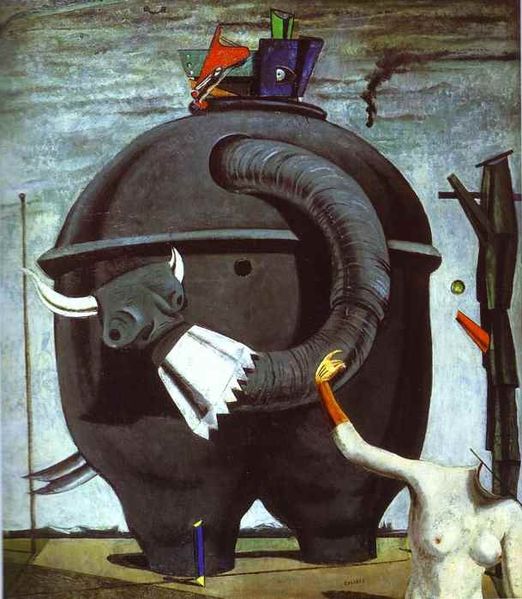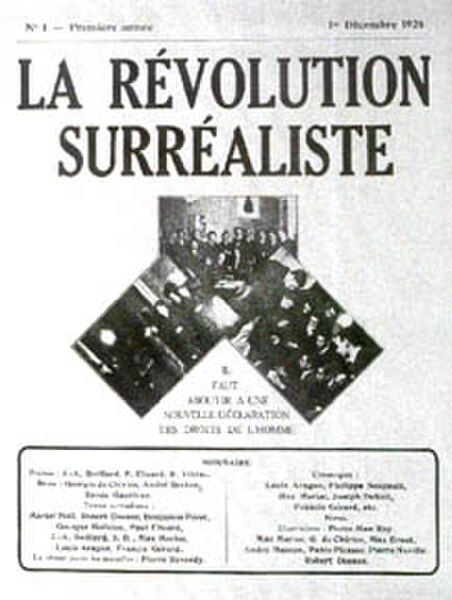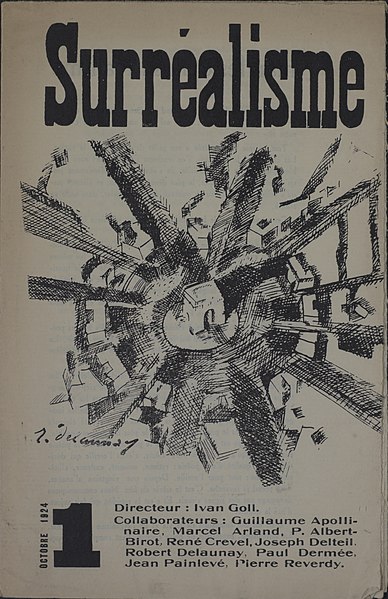Surrealism in art, poetry, and literature uses numerous techniques and games to provide inspiration. Many of these are said to free imagination by producing a creative process free of conscious control. The importance of the unconscious as a source of inspiration is central to the nature of surrealism.
Aerography was innovative media used by Man Ray in a series of paintings over the period from 1917 to 1919. "Seguidilla" (1919) is one of these pictures. Both conceptually and technically the airbrush painting method presented a new point of departure from a traditional way of painting. Ray recalled, "(…) It was thrilling to paint a picture, hardly touching the surface - a purely cerebral act, as it were."
Wolfgang Paalen, Fumage, 1938, Candle smoke on paper
Surrealism is an art and cultural movement that developed in Europe in the aftermath of World War I in which artists aimed to allow the unconscious mind to express itself, often resulting in the depiction of illogical or dreamlike scenes and ideas. Its intention was, according to leader André Breton, to "resolve the previously contradictory conditions of dream and reality into an absolute reality, a super-reality", or surreality. It produced works of painting, writing, theatre, filmmaking, photography, and other media as well.
The Treachery of Images, by René Magritte (1929), featuring the declaration "Ceci n'est pas une pipe" ("This is not a pipe")
Max Ernst, The Elephant Celebes, 1921
Cover of the first issue of La Révolution surréaliste, December 1924
Yvan Goll, Surréalisme, Manifeste du surréalisme, Volume 1, Number 1, October 1, 1924, cover by Robert Delaunay






